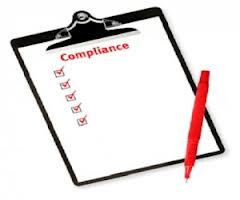Inside and Out: Anti-Corruption Compliance for Joint Ventures (Part II of III)
 A joint venture can create layers and layers of risk for compliance officers. It is always good to start from the inside and work your way out.
A joint venture can create layers and layers of risk for compliance officers. It is always good to start from the inside and work your way out.
If your joint venture partner is a state-owned enterprise, or even more difficult, if your joint venture partner includes a state-owned enterprise in its ownership, the headaches can start to mount.
Sometimes it is good to graph out the relationships so that risky interactions can be identified and assessed. Starting at the inside of the joint venture, an SOE partner creates significant risks. The interactions between your global company and the SOE partner in the joint venture have to be monitored.
Assuming that the interactions do not involve the transfer of money or other things of value for an improper benefit related to the joint venture itself, there are remaining risks that the global company has to avoid – transfer or other things of value to the SOE for benefits outside the joint venture. In other words, the global company has to avoid inexplicable payments to the SOE in the joint venture itself that are made for illegal benefits from the SOE outside the joint venture. In this case, the joint venture becomes a vehicle by which to disguise bribery payments for benefits outside the joint venture.
As we move from the inside to the outside, the risks become apparent relating to the operation of the joint venture itself. For example, the joint venture may interact with foreign government officials (including the SOE) and could leverage its SOE relationships for an improper benefit either contracts and/or regulatory licenses, permits or customs approvals. It is difficult to regulate a joint venture’s interactions with foreign government officials when you partner is a SOE, or where your company is relying on the local company for its local contacts and expertise for business development and/or regulatory knowledge and experience.
The risks are compounded when the global company does not exercise control of the joint venture. In that case, the global company has to urge, beg and plead for the majority partner to adhere to anti-corruption compliance standards and controls. Often, these requirements are established in the joint venture contract but the success in securing such contract protections depends on the importance of the global company to the joint venture itself.
A separate set of issues arises when the joint venture seeks to retain third party agents and/or distributors. Depending on the amount of control, the global company usually can impose its set of standards for conducting due diligence of third party agents and distributors.
However, the risks become more difficult when the joint venture partner brings to the joint venture a proposed third party agent or distributor and vouches for the agent or distributor. If the joint venture partner is an SOE, the issues become even more complicated as such referral creates an obvious red flag for a government-sponsored referral.
 Joint ventures are an important means for global expansion for a company. It is often more efficient than acquiring a foreign company. The compliance headaches, while significant, should never be a bar to an otherwise positive business opportunity.
Joint ventures are an important means for global expansion for a company. It is often more efficient than acquiring a foreign company. The compliance headaches, while significant, should never be a bar to an otherwise positive business opportunity.
As I always say, compliance should never be the reason for avoiding an otherwise positive business opportunity. Compliance has to support its business to make sure that such opportunities can be realized without threatening the company. For its part, the company has to recognize that compliance may need additional resources to ensure compliance in high-risk countries or in high-risk joint ventures.














